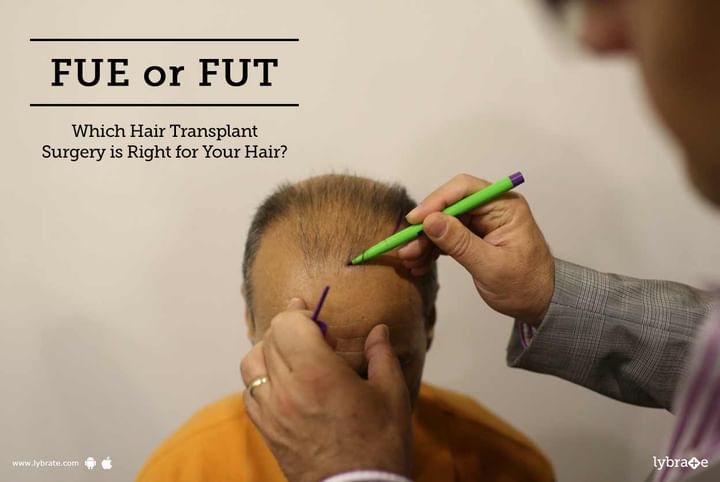FUE or FUT: Which Hair Transplant Surgery is Right for Your Hair?
A head full of hair is called a crowning glory and not only improves the looks and appearance of the person, but also adds to the person's image and self-esteem and confidence. With hair loss, the psychological effect is felt very strongly and can even lead to depression. Both men and women are equally affected by hair loss or balding, and can be treated with hair transplant.
It is a surgical procedure, wherein hair follicles are removed from one site that has normal hair growth (donor site) and placed on the bald patch with no or thin hair (recipient site). While the back of the head is the most common donor site, sometimes even the torso, trunk, and legs can be a good source. Hair is believed to grow in groups of follicles, so transplants are also done as follicular units.
Hair transplant usually differs in the way that the hair follicles are removed from the donor site. This can be done in two ways as outlined below.
Follicular unit strip surgery (FUSS): In this procedure, the donor site with a thick hair growth is identified and strips of tissue of about 1 x 15 cm are removed along with hair follicles. Under a microscope, excess fiber and fatty tissue in this strip is removed. The recipient site is prepared by creating small punctures at regular intervals into which the hair follicles are placed at appropriate angles, taking care to give a realistic look. The donor site will have minor injuries, which will heal with the new hair growing into it. The donor site will take about 2 weeks for the uptake of the follicles.
Follicular unit extraction (FUE): in FUE small punches are made at the donor site to remove tissues of 0.6 to 1 mm, which will contain hair follicles. These are placed into the recipient site at predetermined spacing and angles to produce a realistic appearance. This technique produces a more natural appearance and also fewer scars on the donor site. It takes longer than the strip surgery though.
The success of hair transplant depends on the postoperative care. The doctor will give a set of instructions for hair wash and hair care, which are to be followed strictly. In the first 10 days after transplant, the patient will experience a 'shock loss' where almost all of the new hair follicles will fall out leading to hair thinning. New hair growth in this area will be seen over the next 2 to 3 months. Itching and minor swelling will subside on their own.
With good follow-up care, hair transplant can be a boon to people who have baldness and can provide a big boost to self-esteem and confidence.
In case you have a concern or query you can always consult an expert & get answers to your questions!



+1.svg)
